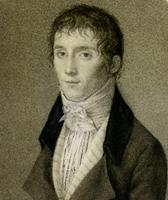*How It came to be:
Typically, a lens is used to focus the light reflected or emitted from objects into a real image on the light-sensitive surface inside a camera during a timed exposure. With an electronic image sensor, this produces an electrical charge at each pixel, which is electronically processed and stored in a digital image file for subsequent display or processing. The result with photographic emulsion is an invisible latent image, which is later chemically "developed" into a visible image, either negative or positive depending on the purpose of the photographic material and the method of processing. A negative image on film is traditionally used to photographically create a positive image on a paper base, known as a print, either by using an enlarger or by contact printing.

Born 1765, French inventor Nicéphore Niépce was fascinated by lithography but unskilled at drawing. He sought a way to collect images from nature. In 1826-27, he captured the view from his workroom window using light-sensitive chemicals on a piece of metal. This was the first permanent photograph. Niépce kept his process a secret until 1829, when he partnered with Louis-Jacques-Mandé Daguerre.
More information on Nicephore Niepce!
*History of the camera:

The earliest extant written record of the camera obscura is to be found in the writings of Mozi (470 to 390 BCE), a Chinese philosopher and the founder of Mohism. Mozi correctly asserted that the image in a camera obscura is flipped upside down because light travels in straight lines from its source. His disciples developed this into a minor theory of optics. A camera obscura which is Latin for "dark chamber" is an optical device that led to photography and the photographic camera. The device consists of a box or room with a hole in one side. Light from an external scene passes through the hole and strikes a surface inside, where it is reproduced, rotated 180 degrees (thus upside-down), but with color and perspective preserved. The image can be projected onto paper, and can then be traced to produce a highly accurate representation. The largest camera obscura in the world is on Constitution Hill in Aberystwyth, Wales. Using mirrors, as in an 18th-century overhead version, it is possible to project a right-side-up image. Another more portable type is a box with an angled mirror projecting onto tracing paper placed on the glass top, the image being upright as viewed from the back.